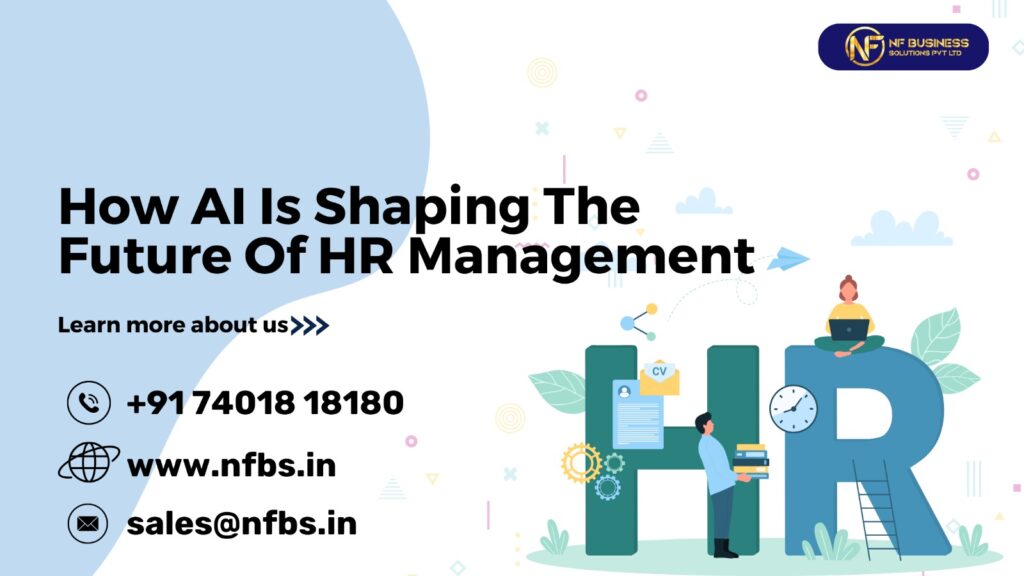The Changing Landscape of HR Management:
The Human Resources field has experienced significant transformations in recent years due to the unique challenges faced by HR professionals across various industries. In the wake of the pandemic and amidst a financially uncertain decade, organizations have been compelled to adapt. HR leaders have had to innovate and find creative solutions throughout the Employee Lifecycle to maintain competitiveness in the business landscape. The integration of emerging technologies, like artificial intelligence (AI), has played a pivotal role in streamlining processes such as onboarding, training, and workforce management, leading to increased efficiency and effectiveness.
Unlike automation, which operates based on predefined rules, genuine AI systems have the ability to analyze data, use it for decision-making, learn from past errors, and strategically tackle complex problems. Predictive and Prescriptive Analytics exemplify how AI can assist organizations in optimizing efficiency and fostering growth.
The Role of AI in HR Transformation:
Talent acquisition and onboarding represent pivotal components of HR management. The integration of AI into HR processes enables the identification of optimal candidates for job positions and facilitates the establishment of relationships that transform these candidates into valuable employees.
Moving Beyond Automation:
AI plays a vital role in automating and overseeing a substantial portion of the candidate selection process, effectively notifying individuals possessing the requisite skills for available job openings.
Predictive and Prescriptive Analytics:
Furthermore, HR data can be leveraged to forecast a candidate’s likelihood of accepting a job offer and subsequently predict their performance outcomes with a considerable degree of precision, as well as estimate their expected tenure.
AI Tools Transforming HR Processes:
For example, Pymetrics stands out as an AI and ML tool designed for HR purposes, utilizing neuroscience-based games to assess and evaluate candidates while aligning them with the relevant competencies required for positions within an organization. Since its inception, numerous companies have harnessed its algorithms to streamline talent acquisition, training, and development processes.
Another notable HR analytics platform is DreamTeam, which primarily focuses on recruitment. It empowers users to construct personalized HR dashboards by incorporating data sourced from their applicant tracking system (ATS).
Performance Management with AI:
AI can also be effectively employed for performance management, facilitating the consolidation of employee data into a centralized repository. This consolidated information serves as a valuable resource for leaders and stakeholders to evaluate employee performance and share feedback with other team members.
Enhancing Performance and Morale with Real-time Analysis:
The utilization of real-time analysis and AI-driven performance reviews contributes to enhancing overall employee performance and boosting morale.
Paycor represents one of the recommended payroll tools in the context of the performance management process, with a specific focus on enhancing employee retention initiatives. This HR analytics application collects data pertaining to payroll, attendance, and employee benefits to provide insights into labor market trends. These insights can inform various HR-related decisions, including identifying a company’s training and development requirements.
Employee Engagement and Training:
Employee engagement and training represent crucial facets of HR management that can be significantly enhanced through the application of AI.
Tailored Training Programs with AI Analytics:
Organizations can leverage AI-powered data analytics, including predictive analytics, to create tailored training programs that align with the unique learning patterns and requirements of individual employees. This approach fosters a stronger alignment between training initiatives and employee engagement.
Leapsome: Adaptable HR Analytics for Employee Development
Leapsome, an adaptable HR analytics platform suitable for businesses of all sizes, offers HR departments the ability to monitor employee development, engagement, performance, and more.
Automating Repetitive HR Tasks:
The automation of repetitive HR tasks using technologies like machine learning (ML) and AI enables HR teams to redirect their focus toward more critical responsibilities, such as talent acquisition and engagement. By automating repetitive tasks, the need for paperwork and stationary materials is eliminated, leading to reduced operational costs.
If your business seeks actionable reports on employee performance and satisfaction indicators, consider transitioning to intelliHR, an HR automation software interface. It provides analytics tools that empower HR professionals to align their efforts with the company’s strategic business objectives.
The Rise of HR Chatbots and Virtual Assistants:
Virtual assistants and chatbots, such as Chat GPT, are gaining prominence as AI-powered tools in the HR industry. HR chatbots serve as virtual HR help desks, with employees increasingly utilizing them to obtain answers to routine inquiries. AI-driven virtual assistants can handle a wide range of HR functions, including enhancing employee engagement, generating insights related to talent metrics, and managing workflow processes.
Adapting HR Management for the Future:
In summary, the adoption of HR technology within organizations is inevitable, given its capacity to rapidly revolutionize significant HR functions.
Harnessing Predictive and Prescriptive Analytics:
Predictive analytics utilize current and historical data to anticipate future developments. Going a step further, prescriptive analytics not only make predictions but also provide multiple solutions to address a problem, along with the potential outcomes of each option. This empowers HR Business Leaders to proactively explore innovative solutions.
HR departments must evaluate and fully grasp the implications of technology to enable organizations to maintain peak productivity throughout the fiscal year.

